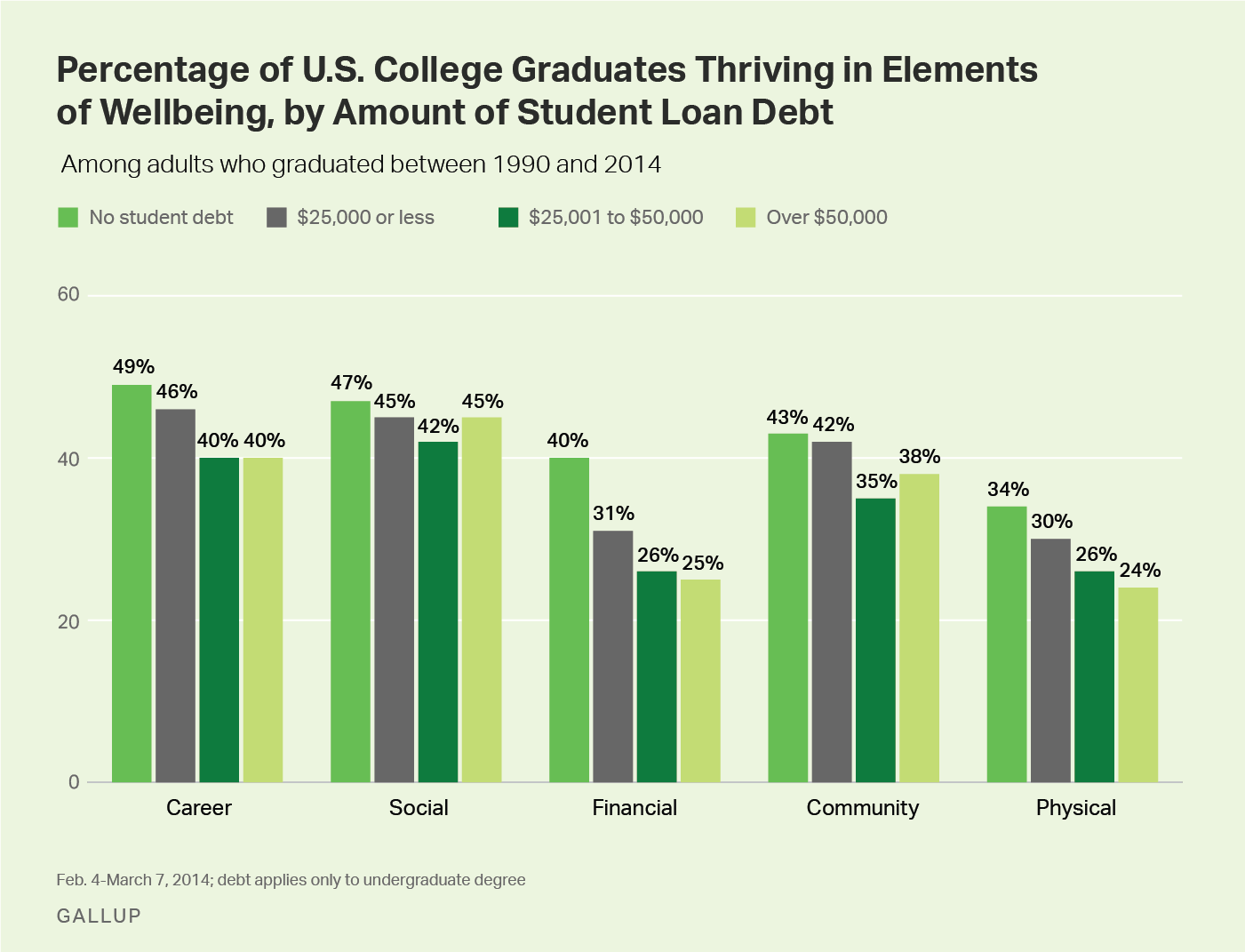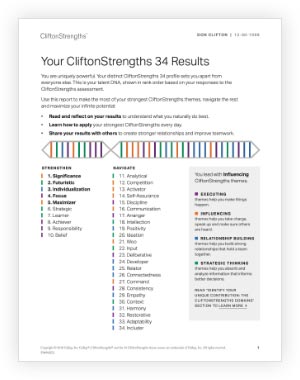Gallup finds that a single issue consistently challenges campus leaders -- the difficulties they face in serving the needs of the "New Majority" of college students.
Dr. Elaine P. Maimon, president of Governors State University, defines the New Majority as a growing number of currently enrolled college students who face unique challenges financing their college experience. As Maimon outlines in Leading Academic Change: Vision, Strategy, Transformation, the New Majority includes first-generation college students, students of color, adults and military veterans. Their financial wellbeing has become a determining factor in their ability to engage in their schoolwork and their institution's culture, to complete their education, and to achieve success upon graduation.
While a student's school of choice, socio-economic status and career path will all affect their financial future, difficulty in paying for college has a lasting effect on a student's likelihood of thriving later in life: Graduates who borrowed more than $25,000 to finance their undergraduate degree have lower rates of wellbeing upon graduation in every aspect of their wellbeing -- not just their financial wellbeing.

What is the campus experience for the New Majority?
Maimon explains that "the New Majority … are challenged by navigating higher education bureaucracies. The headlines about ruinous college debt often deter them from going to college at all."
And according to Dr. Danny Pugh, vice president of student affairs at Texas A&M University, "The historical challenges associated with finances/debt, access and an ever-changing job market remain ever-present to new and recent college graduates. However, those problems are compounded by the rising cost of education, financial insecurities linked to hunger and homelessness, growing mental health issues, and a general feeling of hopelessness regarding their place in the world."
Although nine in 10 college and university presidents say that serving lower-income students better is a high priority for them, degree completion rates among Pell Grant-eligible students trail average completion rates.
A growing number of currently enrolled students are working while enrolled in college, and balancing academics and employment is daunting.
Dr. Emily Lehning, associate vice president for student life at Kansas State University, explains:
"We recognize that students have concerns about financing their education. As the cost of college attendance has increased, so have the demands on students to work part-time or full-time jobs, to find scholarship support, and to accept student loan assistance. It is no longer possible to work over the summer break and save for the next school term. Students, even good students with some scholarship support, share with us their concerns about paying tuition and their living expenses. We continue to see students who are concerned about finding employment after graduation with the expectation that they will have student loan debt."
How can campus leaders empower the New Majority to thrive on campus and beyond?
What if institutions connected with their students using intentional touchpoints to increase students' confidence in their inherent strengths to persist through these immense challenges?
Every campus aspires to this model, but helping students overcome financial wellbeing challenges requires schools to alter the education experience from day one.
Gallup research shows that graduates who were emotionally supported during college -- who had a mentor who encouraged their hopes and dreams and professors who cared about them as people and made them excited about learning -- are three times as likely to have thriving wellbeing after college. They are also six times as likely to be attached to their alma mater.
Lehning says:
"We used to be able to say that students were not ready for college. Our new way of thinking has to be that our campuses have to be ready for our students. … We have to meet our students where they are, to be agile in our offerings of programs and services, to understand the political and societal issues of the day and create space to prepare our students to be leaders on these issues, to address the rising cost of education which is positioning our society to move toward higher education as only attainable by the wealthy, to prepare our students with hands-on, practical experiences in addition to theory. This is our duty."
Overcoming these financial challenges requires students to work beyond the typical on-campus employment commitments, often extending completion time and decreasing the chance of degree attainment. When schools build strengths-based touchpoints into a student's experience -- intentional strengths interventions or conversations targeting a student's financial wellbeing -- students persist.
Campus leaders must empower students with a deep understanding of how their unique talents can help them navigate support systems, problem-solve with advisers and make plans for their financial success.
Fulfilling the Mission
College leaders share a sacred and important mission -- creating a thriving, engaged campus that provides an excellent education. But the New Majority brings challenges that test college leaders' approach to higher education. Though university leaders can't change the world that the New Majority will enter after college -- much as they'd like to -- they can design an exceptional college experience for these students. Arguably, the most critical determinant of their college experience is their financial wellbeing. While leaders can't change a student's financial circumstances, they can build in more intentional touchpoints focused on increasing the skills and awareness critical to a student's overall wellbeing.
And addressing the New Majority's problems can't be delayed. When these students lose hope and resilience, campuses suffer in their retention rates and overall ability to deliver on their mission. Conversely, when leaders adapt to meet the needs of every student through intentional, individualized and caring touchpoints, they have delivered on their promise of a high-quality, transformational learning experience for every student.
Partner with Gallup to promote lifelong student success:
- To develop engaged and thriving students -- and watch your campus culture transform -- visit www.strengthsquest.com.
- Read more about how you can build more intentional touchpoints into the student's experience.
- Create campus champions by taking our CliftonStrengths for Students Campus Champions course.



